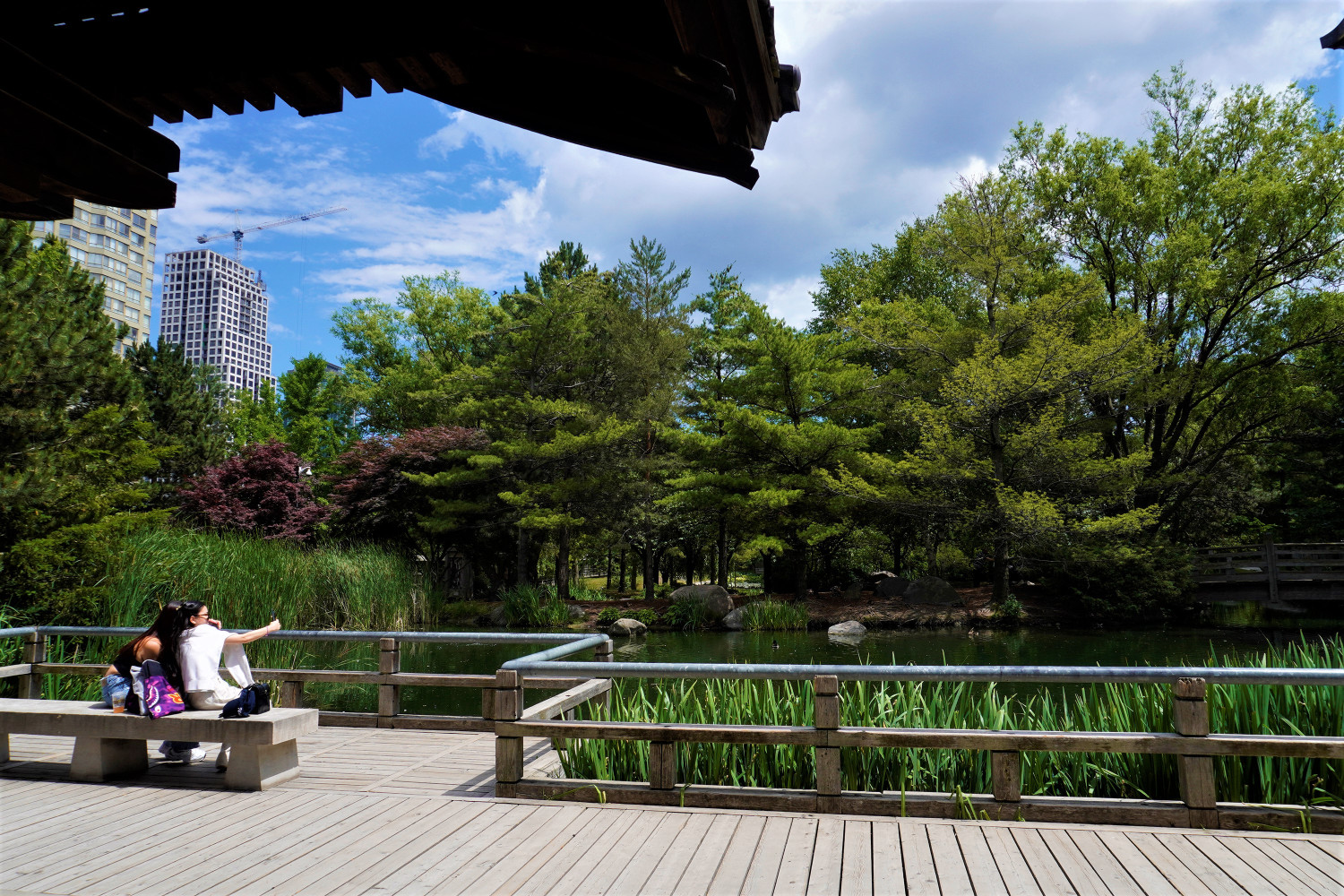
Mississauga retires Living Green Master Plan but commits to more detailed climate action
Mississauga has long been a leader on climate action. In 2012, more than half a decade before international and national bodies declared a climate emergency, the City was rethinking its climate responsibilities through its Living Green Master Plan. After a decade, the strategy is set to retire, but stronger, more detailed commitments incorporated into the everyday operations of departments will advance sustainability as the new way of doing things.
While Mississauga hasn’t experienced scorching wildfires, or debilitating droughts it has witnessed the wrath of so-called “once in a century” superstorms, ice storms and other consequences of our changing climate.
A heat wave swept across the southern reaches of the province in April. On the 20th day of that month, Mississauga saw a high of 29 degrees, almost triple the average temperature for that time of year. While anomalies have occurred at other points in history, and no single-day temperature increase can be directly attributed to climate change, disruptions such as the current heavy smoke choking much of Ontario are frequent reminders that municipalities need to adapt to the realities of a changing world as planetary temperatures increase to levels not seen during the time of human civilization.
The Region of Peel is warming at twice the rate of the global average, meaning heatwaves and storm events will continue to impact residents and their properties.


Flooding across Mississauga devastated the city a decade ago.
(YouTube)
“Climate change is one of the most pressing issues of our generation,” Mayor Bonnie Crombie said in a recent press release. “We must hold ourselves accountable. However, we cannot do it alone. We must continue to work with other levels of government to advocate for funding as we look to fast track our goal of achieving net zero to ensure our community and our city remains resilient for future generations to come.”
During COP15 in October, Montreal signed onto the Montreal Pledge solidifying its commitment to support biodiversity and, in the wake of the latest report from the Intergovernmental Panel on Climate Change (IPCC) issued a ‘final warning’ for humanity, reaffirming its commitment to climate action. Mississauga is also committed to climate action.
But its leaders know this has to be rethought.
The reality is that sustainability, emissions reductions and broad climate declarations have come forward as novel ideas, applied as special policies to meet the growing expectations of residents.
Now, the City of Mississauga wants to stop treating climate action this way and begin incorporating a range of practices, policy formulation and budgeting as everyday decision making that puts sustainability at the centre of the municipality’s operations, across all departments.
An analysis of the City’s 2023 Capital Budget by The Pointer found that Mississauga is dedicating nearly $225 million towards climate mitigation and adaptation measures, amounting to 57 percent of the capital budget. This is an increase from the approximate $200 million, or 41 percent, allotted for similar initiatives in the 2022 budget.
While Mississauga has received insufficient support from the PC government whose policies continue to ignore the devastating consequences of human induced climate change, the City has still managed to take big steps on climate action using increased funding in its own budget and policies brought together by staff, then approved by a progressive council.
Examples such as storm water fees based on the size of homes and the major budget commitment to green the transit fleet have become more common.
Funding toward climate mitigation and adaptation measures has allowed the City to see relative success with the goals initiated under the Living Green Master Plan. But as the City reaches a decade under the guidance of these sustainability policies, it is closing out the plan, moving forward with climate action by leaving behind any notion that climate action is a “special” part of municipal decision making. Officials now want to make it the heart of what they do.
“As 98% of all actions in the Living Green Master Plan are now either completed or underway (e.g. managed by other strategies), the decade-old plan is no longer needed to provide guidance for the City’s sustainable strategy,” reads a staff report on the final update to the Plan.
Progress towards the 49 actions set out in the Living Green Master Plan. The difference between completed and ongoing, and underway, is that the former identifies actions that are completed but can have continual ongoing progress while the latter identifies actions that are in the midst of being completed.
(City of Mississauga)
The Living Green Master Plan identified 49 actions that would help advance the City toward a more sustainable future. They fell within nine priority areas including transportation, urban form, natural heritage, air, water, waste, energy, organization and policy, and education programs. Out of the 49 action items, 19 have been completed and closed with the remainder being completed and ongoing, or have status underway. One item was deferred for being non-applicable.
Through completion of the action items in each priority area, the City advanced its efforts by developing more specific plans that will guide specific areas of sustainability under the broader Climate Change Action Plan (CCAP). In 2019, after declaring a climate emergency, Mississauga adopted the CCAP which lays out 89 action items — so far, 70 percent have been completed or are underway.
During a discussion in the council chamber in late April when the final report of the Living Green Master Plan was presented, staff provided assurance that, while the decade-old plan was not being renewed, or replaced by another sustainability plan, all of the actions will be undertaken through the CCAP and other more specific strategies. The Living Green Master Plan acted as an overview that guided the City as it eased its way into more sustainable practices. But as time elapsed, the City was able to create more detailed plans for many of the nine key priorities, priorities which have not changed.
“We are happy to say that over the course of a decade much of the City’s work has an environmental focus to it,” a City spokesperson told The Pointer in an email. “Climate action and taking care of the environment remains a top priority; this is evidenced by the 17 plus plans, strategies, standards and policies which now guide the City’s environmental efforts.”
The City also identified the importance of implementing both mitigation and adaptation measures that work toward decreasing the city’s emissions footprint, while also preparing it for a future that will be defined by climate consequences (just look at the weekly headlines around the globe, including the GTA’s status yesterday as having the worst air quality in the world). The City spokesperson said the CCAP has two major goals: mitigation resulting in an 80 percent reduction of greenhouse gas emissions relative to 1990 levels by 2050; and adaptation resulting in increased community resilience and the ability to respond to future climate events.
Transportation makes up the largest proportion of the City’s corporate emissions, making it a big target for strategic carbon reductions.
(The Pointer files)
One of the largest contributions the city can make to mitigation efforts is through its Transportation Master Plan. Approximately 70 percent of the city’s corporate emissions come from its MiWay bus fleet. As a result, Mississauga has put forth significant investment to transition away from dirty diesel buses. A staff report from the City shows that nearly 60 percent of the City’s MiWay fleet will be hybrid electric by the end of 2024.
Other mitigation efforts include the adoption of Peel’s Electric Vehicle Strategy, the implementation of Green Development Standards for community buildings and Corporate Green Building Standards, and continued educational support. Seventy six percent of the near $225 million allocated for sustainability initiatives in the 2023 Capital Budget were for mitigation measures. The remaining 24 percent, or $52.6 million, is being put toward adaptation initiatives.
Notable adaptation efforts include the City’s Urban Agriculture Strategy, Invasive Species Management Plan, and increasing the urban tree canopy (which can be both a mitigation and an adaptation measure).
Most recently, the City implemented its Stormwater Master Plan to protect the communities from the increasing variability and intensity of storms. In July 2013, historic rainfall levels caused widespread flooding and damages to Mississauga, Brampton and other areas within the GTA, turning roads into lakes. Some parts of Peel received 126 millimetres of rain in just 90 minutes (537 millimetres fell on Mississauga in all of 2022). The flash storm resulted in 7,000 flooded and damaged basements across the region, with damages amounting to an estimated $1 billion. As climate change becomes more extreme, cities must prepare themselves and their infrastructure.
“In Mississauga, we’re experiencing heavier rainfall and more severe storms related to climate change,” Sam Rogers, director of Infrastructure Planning and Engineering Services, said in a press release. “Through the newly approved plan, the City can help address issues facing Mississauga today, including flooding, water quality and pollution while working to preserve our environment.”
In creating more specific plans to target detailed actions, the City of Mississauga is broadening its scope, implementing climate policy and action throughout a range of municipal departments rather than isolating the CCAP as a standalone strategy without a specific home. While the City does have a dedicated Environment team which leads the CCAP, a spokesperson previously told The Pointer that many staff from various City departments own or contribute to actions under both the Living Green Master Plan and the CCAP. This includes staff committed to reducing greenhouse gas emissions (for example, energy management, transportation and waste staff) and contributing to community resiliency (stormwater management, parks and forestry staff).
“Climate change is not the responsibility of a singular area or team as there are many factors/elements that play a role in reducing or effecting positive changes,” the City spokesperson said. “That’s why it’s important that a climate lens is applied into City practice and decision-making and is evidence in the various plans, policies and strategies the City has introduced in the last several years.”
The City is currently in the process of reviewing the CCAP to align with the more ambitious target of limiting temperature increase to 1.5 degrees of warming beyond pre-industrial levels, consistent with the IPCC’s latest recommendations — currently the CCAP is aligned with two degrees of warming. The City is looking for input from Mississauga’s residents through a survey that will determine targets and implementation pathways.
Email: [email protected]
Twitter: @rachelnadia_
At a time when vital public information is needed by everyone, The Pointer has taken down our paywall on all stories relating to the pandemic and those of public interest to ensure every resident of Brampton and Mississauga has access to the facts. For those who are able, we encourage you to consider a subscription. This will help us report on important public interest issues the community needs to know about now more than ever. You can register for a 30-day free trial HERE. Thereafter, The Pointer will charge $10 a month and you can cancel any time right on the website. Thank you
Submit a correction about this story


